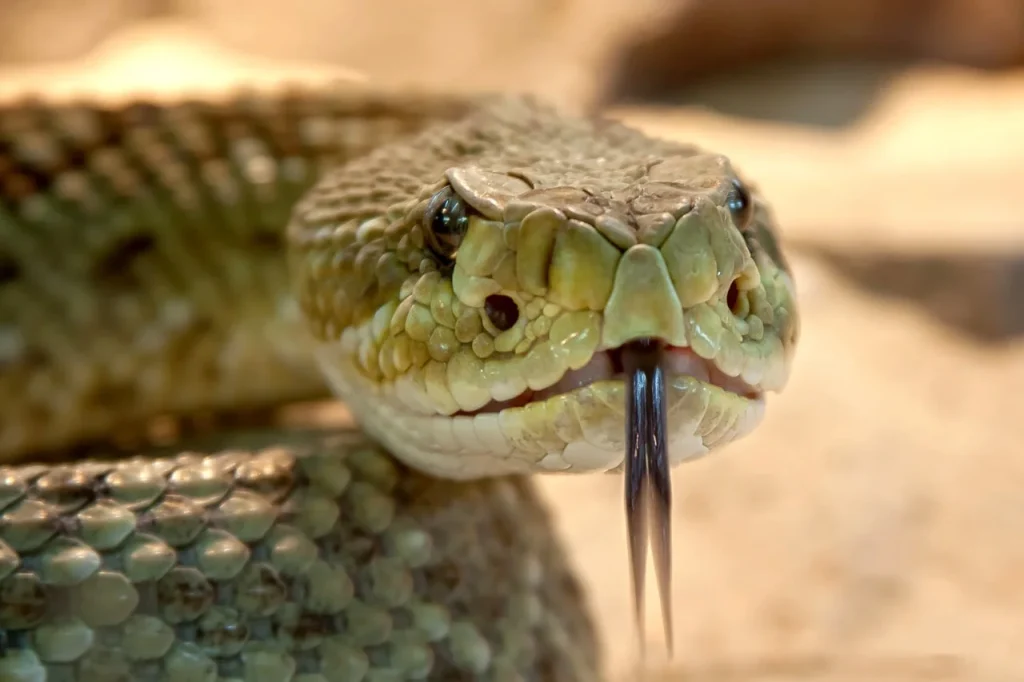Rattlesnake FAQ
We’re nearing the quiz, but first, let’s go through some essential FAQs about rattlesnakes.
- Will rattlesnakes chase you?
No, they generally do not chase humans. They are defensive creatures that prefer to avoid confrontation. If they feel threatened, they’re more likely to coil up and rattle as a warning or try to escape rather than attack. - Why do rattlesnakes make sound?
They rattle as a warning to potential predators and threats. The sound comes from special segments at the end of their tails that click together when vibrated. This noise is meant to deter threats by alerting them of the snake’s presence and its readiness to defend itself if necessary. - Do rattlesnakes swim?
Yes, they can swim. They are surprisingly good swimmers and can move across water bodies when searching for food, mates, or new habitats. Their swimming is characterized by a serpentine movement similar to their movement on land. - Are rattlesnakes poisonous?
They are venomous, not poisonous. The distinction is important because venomous creatures inject toxins via a bite or sting, while poisonous creatures release toxins when touched or eaten. Rattlesnake venom is used primarily to immobilize and pre-digest their prey. - Will a rattlesnake bite kill a horse?
A rattlesnake bite can be dangerous to a horse, but it is rarely fatal if treated promptly. The severity of the bite depends on factors like the size and health of the horse, the amount of venom injected, and the quickness of receiving veterinary care. Effective antivenom treatment is crucial to help neutralize the venom’s effects.




2 Comments
Very informative. So many things I did not know. Thank you
Very interesting info! I have to point out something though! You mention early in the article that these snakes can launch up to two thirds of their body length in a strike. But in the myths section you say they can launch up to one third of their body length. I suppose it depends on the specific breed that determines that maybe?